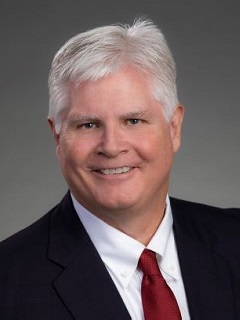Major digital transformation is the right Rx
Improving today’s workplace and preparing for sustainable growth with a Workday enterprise platform

Improving today’s workplace and preparing for sustainable growth with a Workday enterprise platform
Client
Not-for-profit system of hospitals and healthcare providers
Industry
Healthcare
Primary goal
Transform HCM, Payroll, Finance, and Supply Chain
Primary platforms
Workday enterprise platform
When an acquisition doubles your revenue in your largest market, there are some big numbers at play—especially when you’re a $48 billion CPG company. And the bigger the numbers, the bigger the impact of every strategic and tactical decision you make. You can’t afford to have your visibility clouded and your decision-making hampered by having two disparate financial operations functions each with its own systems, software, and people. So, when a global CPG company found itself in this situation, it called on KPMG to drive fast, smooth, cost-efficient integration of financial operations.
1
and global alignment between cross-functional teams
2
into consolidated spend driving meaningful insights and more proactive decisions
3
the monthly close cycle
4
revenue and sales forecasting
As one of the nation’s largest networks of hospitals and healthcare providers, this nonprofit is intent on delivering the highest standard of care while continuing aggressive growth. Its goals require having all hands working together to manage patient care, operations, and acquisitions. So, when it became clear that critical back-office operations were struggling due to legacy, customized, and incompatible software platforms, the organization called on KPMG and Workday.
Client transformation journey
Acquiring a large organic food and beverage business helped a global CPG company expand its operations and nearly double its revenue in the U.S. However, as with most mergers, the integration posed some challenges. Two disparate IT environments with different accounting and reporting models, separate enterprise resource planning (ERP) systems, and multiple business intelligence (BI) tools required extensive manual intervention and offline data manipulation, preventing uniform reporting and analysis. Data was trapped in silos. Visibility was insufficient. A new CFO and the finance and accounting teams lacked the insight to support effective forecasting and both strategic and tactical decision-making. In a sector as competitive and fast-changing as food products, this company needed to increase visibility quickly.
Acquiring a large organic food and beverage business helped a global CPG company expand its operations and nearly double its revenue in the U.S. However, as with most mergers, the integration posed some challenges. Two disparate IT environments with different accounting and reporting models, separate enterprise resource planning (ERP) systems, and multiple business intelligence (BI) tools required extensive manual intervention and offline data manipulation, preventing uniform reporting and analysis. Data was trapped in silos. Visibility was insufficient. A new CFO and the finance and accounting teams lacked the insight to support effective forecasting and both strategic and tactical decision-making. In a sector as competitive and fast-changing as food products, this company needed to increase visibility quickly.
While this CPG company’s business is spread across two continents (and originates from a number of acquired companies), its financial operations are now centralized and unified. A cloud-based platform extracts and loads data from numerous global sources, then configures and stores it in a central location. Accounting staff across multiple back offices work within a single governance structure and with a single set of streamlined processes, enabling effective reporting and supporting a swift, accurate close. Across the enterprise, visibility is excellent, and insights are at the ready, because analysts can perform real-time calculations and drill down swiftly to the meaning behind the numbers. Unified financial operations helps this $48 billion player predict accurately, plan effectively, and act swiftly—all crucial in a sector where windows of opportunity close as suddenly as they open.
While this CPG company’s business is spread across two continents (and originates from a number of acquired companies), its financial operations are now centralized and unified. A cloud-based platform extracts and loads data from numerous global sources, then configures and stores it in a central location. Accounting staff across multiple back offices work within a single governance structure and with a single set of streamlined processes, enabling effective reporting and supporting a swift, accurate close. Across the enterprise, visibility is excellent, and insights are at the ready, because analysts can perform real-time calculations and drill down swiftly to the meaning behind the numbers. Unified financial operations helps this $48 billion player predict accurately, plan effectively, and act swiftly—all crucial in a sector where windows of opportunity close as suddenly as they open.
There will be more acquisition targets in the company’s future. And with a cloud-based platform, governance framework, and standardized processes in place, integrating financial operations will be a swift, sure process. A successful integration inspired the CFO and global finance team to consider other areas for transformation. From evolving multiple layers of the target operating model within Finance, to jump-starting transformation across other functional areas, a powerful ripple effect began and continues across the enterprise. Having the right tools and processes to support a grander vision driven by meaningful insights will continue to empower positive change.
There will be more acquisition targets in the company’s future. And with a cloud-based platform, governance framework, and standardized processes in place, integrating financial operations will be a swift, sure process. A successful integration inspired the CFO and global finance team to consider other areas for transformation. From evolving multiple layers of the target operating model within Finance, to jump-starting transformation across other functional areas, a powerful ripple effect began and continues across the enterprise. Having the right tools and processes to support a grander vision driven by meaningful insights will continue to empower positive change.
Acquiring a large organic food and beverage business helped a global CPG company expand its operations and nearly double its revenue in the U.S. However, as with most mergers, the integration posed some challenges. Two disparate IT environments with different accounting and reporting models, separate enterprise resource planning (ERP) systems, and multiple business intelligence (BI) tools required extensive manual intervention and offline data manipulation, preventing uniform reporting and analysis. Data was trapped in silos. Visibility was insufficient. A new CFO and the finance and accounting teams lacked the insight to support effective forecasting and both strategic and tactical decision-making. In a sector as competitive and fast-changing as food products, this company needed to increase visibility quickly.
While this CPG company’s business is spread across two continents (and originates from a number of acquired companies), its financial operations are now centralized and unified. A cloud-based platform extracts and loads data from numerous global sources, then configures and stores it in a central location. Accounting staff across multiple back offices work within a single governance structure and with a single set of streamlined processes, enabling effective reporting and supporting a swift, accurate close. Across the enterprise, visibility is excellent, and insights are at the ready, because analysts can perform real-time calculations and drill down swiftly to the meaning behind the numbers. Unified financial operations helps this $48 billion player predict accurately, plan effectively, and act swiftly—all crucial in a sector where windows of opportunity close as suddenly as they open.
There will be more acquisition targets in the company’s future. And with a cloud-based platform, governance framework, and standardized processes in place, integrating financial operations will be a swift, sure process. A successful integration inspired the CFO and global finance team to consider other areas for transformation. From evolving multiple layers of the target operating model within Finance, to jump-starting transformation across other functional areas, a powerful ripple effect began and continues across the enterprise. Having the right tools and processes to support a grander vision driven by meaningful insights will continue to empower positive change.
Poor visibility threatened business objectives.
Acquiring a large organic food and beverage business helped a global CPG company expand its operations and nearly double its revenue in the U.S. However, as with most mergers, the integration posed some challenges. Two disparate IT environments with different accounting and reporting models, separate enterprise resource planning (ERP) systems, and multiple business intelligence (BI) tools required extensive manual intervention and offline data manipulation, preventing uniform reporting and analysis. Data was trapped in silos. Visibility was insufficient. A new CFO and the finance and accounting teams lacked the insight to support effective forecasting and both strategic and tactical decision-making. In a sector as competitive and fast-changing as food products, this company needed to increase visibility quickly.The preconfigured assets and technology accelerators delivered by KPMG Powered Enterprise let ambitious leadership teams take advantage of embedded leading practices to speed up the decision-making process while instilling confidence.
Unified financial operations support global success.
While this CPG company’s business is spread across two continents (and originates from a number of acquired companies), its financial operations are now centralized and unified. A cloud-based platform extracts and loads data from numerous global sources, then configures and stores it in a central location. Accounting staff across multiple back offices work within a single governance structure and with a single set of streamlined processes, enabling effective reporting and supporting a swift, accurate close. Across the enterprise, visibility is excellent, and insights are at the ready, because analysts can perform real-time calculations and drill down swiftly to the meaning behind the numbers. Unified financial operations helps this $48 billion player predict accurately, plan effectively, and act swiftly—all crucial in a sector where windows of opportunity close as suddenly as they open.
A strong foundation that can keep pace with continued growth.
There will be more acquisition targets in the company’s future. And with a cloud-based platform, governance framework, and standardized processes in place, integrating financial operations will be a swift, sure process. A successful integration inspired the CFO and global finance team to consider other areas for transformation. From evolving multiple layers of the target operating model within Finance, to jump-starting transformation across other functional areas, a powerful ripple effect began and continues across the enterprise. Having the right tools and processes to support a grander vision driven by meaningful insights will continue to empower positive change.
Because we had deep stakeholder involvement from the start and leveraged a build-test-repeat approach on the back end, we had high confidence that the platform would serve all users well. A successful rollout was the proof we needed.
KC Whitehead
Principal, Enterprise Solutions, KPMG LLP

Review current states and determine a KPMG Powered Enterprise path forward
Working closely with our client, KPMG gained a nuanced understanding of its legacy systems and processes, including how heavy customization was causing the need for excessive manual work and preventing the effective sharing of data and insights.
KPMG performed stakeholder analysis and helped form a stakeholder buy-in group. It then demonstrated to stakeholders that KPMG and Workday already had the platform and supporting structure and processes needed and could quickly tailor them to precise requirements. Able to clearly see a future state and its benefits, stakeholders quickly began lending needed support to the project.
Designing a single Workday platform to serve everyone across the organization
Knowing the importance of collaboration in the healthcare industry, KPMG made stakeholder engagement a top priority from the start. Creating multiple stakeholder groups helped foster effective, two-way communication—crucial to effective design—and helped ensure that advocates would be in place across the organization at rollout.
Design progressed efficiently as KPMG wasn’t starting from scratch. Work over many engagements produced leading practices and approaches in everything from technology and service delivery to business processes. Robust change management and communications strategies required minimal tailoring to suit them to our client’s needs.
KPMG collaborated with Workday to design a single, powerful platform for managing HR, Payroll, Finance, and Supply Chain.
KPMG and Workday build-test-repeat until it’s right
KPMG brought with it a library of thousands of testing scenarios from previous engagements. And we quickly put them to work. Through an iterative process, we helped configure the platform to meet the needs of different users performing a range of different tasks. A build-test-repeat approach not only helped ensure that the platform met user needs but also helped train users and set the stage for a successful cutover.
Helping to ensure a smooth transition and widespread adoption
Major transformation doesn’t have to mean major disruptions. Having guided so many companies through these types of changes, KPMG was ready with the right tools, processes, and insights. A detailed cutover plan included technology and change-management activities, robust training, user-acceptance testing, and effective communication to 35,000 employees throughout. It all led to a smooth Workday transition for Finance, Supply Chain, HR, and Payroll.
Human Capital Management (HCM) must keep pace with the demands of talent acquisition, employee retention, personnel movements within the organization, payroll, and benefits in an ever-changing business landscape. When KPMG implements Workday to manage HR and Payroll, automation virtually eliminates manual operations and increases accuracy. Self-service increases employee satisfaction and frees managers to handle critical matters. Easily shared communications improve collaboration, quality assurance, and growth opportunities for employees.
Let’s talk about how automation, self-service HR, and better communications can help your organization grow. KPMG. Make the Difference.


